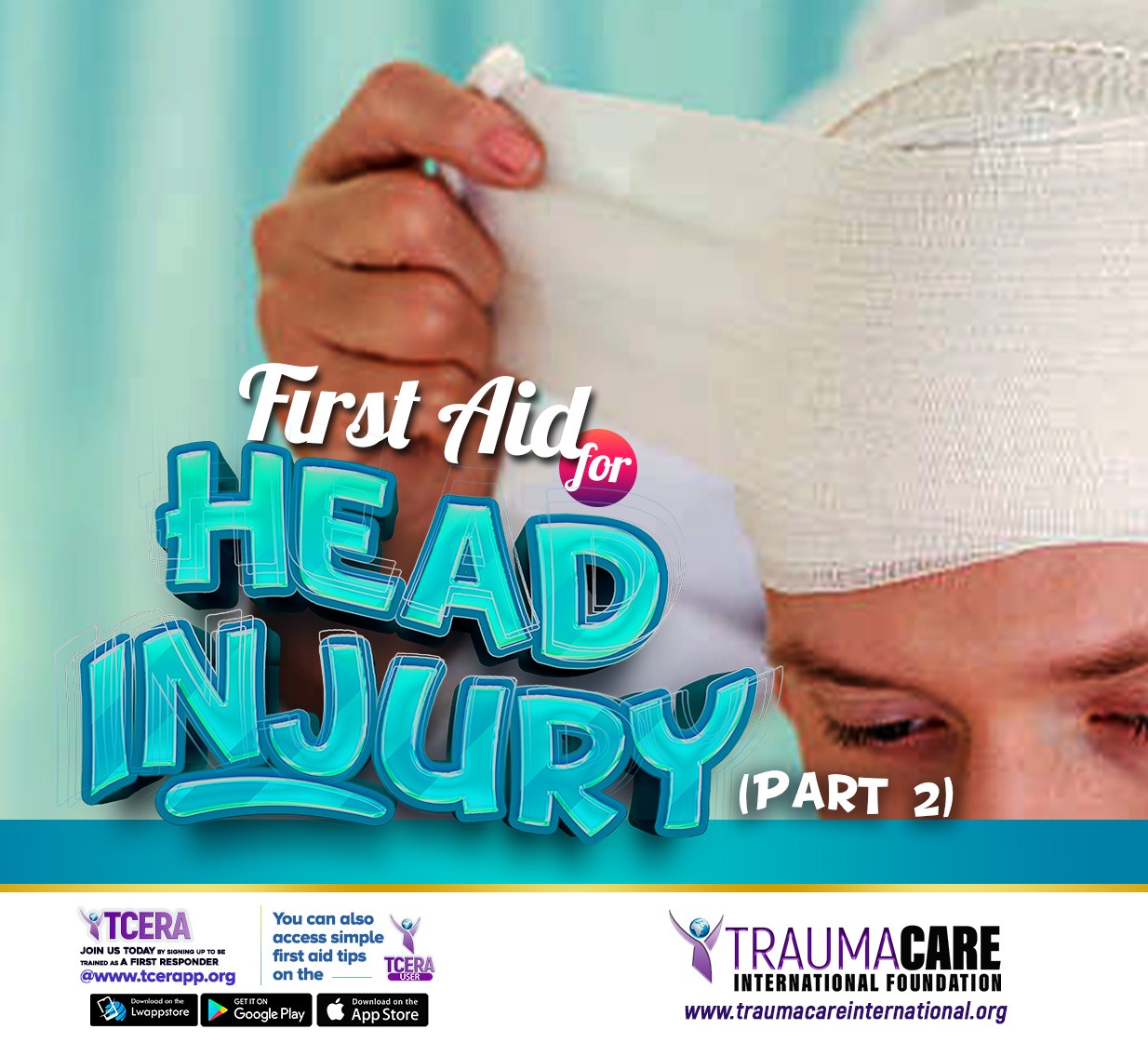Some Important points with regards to First Aid for head injuries as well as common symptoms have been addressed in a previous article (First aid for Head Injury in a conscious casualty), but by way of a refresher, it’s important to note the following:
- SKULL FRACTURE: It’s a break in the cranial bone and if severe can lead to seizures, bleeding in or around the brain, and even leakage of the cerebrospinal fluid that acts as a cushion to the brain.
- CONCUSSION: It’s a sudden but brief loss of mental function caused by a violent shaking of the head, blow or other injuries to the head characterized by immediate and transient alteration in the level of consciousness.
- TRAUMATIC BRAIN INJURY: It’s a dysfunction caused by an outside force to the head that’s strong enough to cause an effect on the brain. It could happen because of severe sports activities, gunshots, fall or car accident.
HOW TO RECOGNISE HEAD INJURY
Recognizing a significant head injury and administering basic first aid can save a life. In the event of a mild to serious brain injury, the affected individual may show any of the below signs:
- Increased drowsiness
- Persistent headache
- Dizziness and confusion
- Loss of balance or memory
- Stiff neck
- Difficulty speaking or walking.
- Vomiting episodes
- Double vision
- Seizure
- Deteriorating level of response
- Unresponsive
- Blood- or blood-stained watery fluid flowing from the ear or nose.
- Unequal pupil size
FIRST AID FOR HEAD INJURY IN UNCONSCIOUS CASUALTY
When someone goes unconscious and unresponsive following a head injury, it is critical to know what to do. This may entail checking for signs of life and assessing for significant injuries until emergency personnel arrive. To help, please follow these steps.
- Call the emergency number and tell them you think the person might have a head injury once you note any signs.
- Confirm the individual is still breathing.
- Once breathing is confirmed, Place in the recovery position gently while carefully supporting the head (avoid twisting). If any blood or fluid appears to be flowing from the ear, place the injured side down to allow the fluid to drain, and place a clean pad between the ear and ground while observing the amount draining.
- While waiting, frequently check breathing and be ready to initiate CPR if breathing stops
- Control any bleeding, but do not apply direct pressure to a bleeding wound if it’s on the head and if the cloth gets soaked place another on top. Do not remove.
- Do not move the casualty unless they are in danger.
- Continue to monitor the person to quickly identify any changes.
The Don’t in head injuries
- DO NOT wash a head wound that is deep or bleeding a lot.
- DO NOT remove any object stuck in a wound around the head.
- DO NOT move the person unless necessary.
- DO NOT shake the person if they seem dazed.
- DO NOT remove a helmet if you suspect a serious head injury.
- DO NOT pick up a fallen child with any sign of head injury.
- DO NOT drink alcohol within 48 hours of a serious head injury.
For more information;
Call: 0808 678 3416 or 0808 584 9338
Email: [email protected],
[email protected] CLICK HERE TO SIGN UP
Download the TCERA user app today.
https://bit.ly/tceraAndroid
https://bit.ly/tcera-IOS





What do you think?
0 Responses
To Comment, you must Sign In
Be the First to Post on this Topic